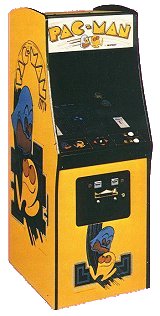
 The Game: As a round yellow creature consisting of a mouth and nothing else, you maneuver around a relatively simple maze, gobbling small dots (10 points) and evading four colorful monsters who can eat you on contact. In four corners of the screen, large flashing dots (50 points) enable you to turn the tables and eat the monsters for a brief period for an escalating score (200, 400, 800 and 1600 points). Periodically, assorted items appear near the center of the maze, and you can consume these for additional points as well. The monsters, once eaten, return to their home base in ghost form and return to chase you anew. If cleared of dots, the maze refills and the game starts again, but just a little bit faster… (Bally/Midway [under license from Namco], 1981)
The Game: As a round yellow creature consisting of a mouth and nothing else, you maneuver around a relatively simple maze, gobbling small dots (10 points) and evading four colorful monsters who can eat you on contact. In four corners of the screen, large flashing dots (50 points) enable you to turn the tables and eat the monsters for a brief period for an escalating score (200, 400, 800 and 1600 points). Periodically, assorted items appear near the center of the maze, and you can consume these for additional points as well. The monsters, once eaten, return to their home base in ghost form and return to chase you anew. If cleared of dots, the maze refills and the game starts again, but just a little bit faster… (Bally/Midway [under license from Namco], 1981)
Memories: It began in 1979 when a young Namco game designer named Toru Iwitani made his fourth video game. Fascinated with pinball, Iwitani had created a series of games combining pinball physics with Breakout-style brick-busting elements, and while Gee Bee, Bomb Bee and Cutie Q were moderate successes for Namco, enough to keep Iwitani employed and developing new titles, the designer himself was finally ready to move beyond video pinball. Cutie Q was one of the first hints as to Toru Iwitani’s next project, with its colorfully cartoony monsters. With a small team of developers at his disposal, Iwitani – supposedly inspired by the shape of a pizza with one slice removed – set about creating a new game with nearly universal appeal. [read more]

 The Game: Avoid missing ball for high score.
The Game: Avoid missing ball for high score.

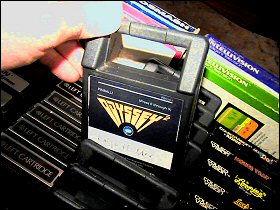 The Game: A virtual pinball machine is presented, complete with flippers, bumpers, and the ability to physically “bump” the table to influence the motion of the ball. Per standard pinball rules, the object of the game is to keep the ball in play as long as possible. (Ralph Baer, 1978 – unreleased prototype)
The Game: A virtual pinball machine is presented, complete with flippers, bumpers, and the ability to physically “bump” the table to influence the motion of the ball. Per standard pinball rules, the object of the game is to keep the ball in play as long as possible. (Ralph Baer, 1978 – unreleased prototype)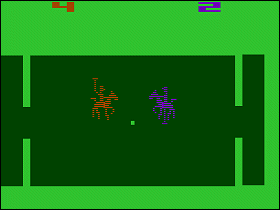 The Game: Climb onto your trusty four-legged ride for a good old fashioned game of horse hockey. Try to knock the ball into your opponent’s goal, but don’t put yourself in a position where you can’t defend your own. (Atari, 1978)
The Game: Climb onto your trusty four-legged ride for a good old fashioned game of horse hockey. Try to knock the ball into your opponent’s goal, but don’t put yourself in a position where you can’t defend your own. (Atari, 1978)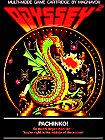 The Game: In a game that bears some slight resemblence to a Japanese offshoot of pinball, you control – for lack of a better description – a man stuck in a gigantic Pachinko playing field. You attempt to keep your ball in play, scoring points as often as possible by landing the ball in one of five cups marked with a point value – some targets can score zero points, others as high as ten. The other player – either a human being or the computer – can temporarily take over your ball by touching it, just as you can with theirs. (There’s nothing quite like making someone else’s balls work for you.) And a third man roams the playing field as well, grabbing your…well, let’s start that again. If the computer-controlled third man grabs a ball in mid-flight, he’ll relaunch it in a random direction, maybe to you, maybe to your opponent. Whoever accumulates 100 points first wins. (Magnavox, 1980)
The Game: In a game that bears some slight resemblence to a Japanese offshoot of pinball, you control – for lack of a better description – a man stuck in a gigantic Pachinko playing field. You attempt to keep your ball in play, scoring points as often as possible by landing the ball in one of five cups marked with a point value – some targets can score zero points, others as high as ten. The other player – either a human being or the computer – can temporarily take over your ball by touching it, just as you can with theirs. (There’s nothing quite like making someone else’s balls work for you.) And a third man roams the playing field as well, grabbing your…well, let’s start that again. If the computer-controlled third man grabs a ball in mid-flight, he’ll relaunch it in a random direction, maybe to you, maybe to your opponent. Whoever accumulates 100 points first wins. (Magnavox, 1980)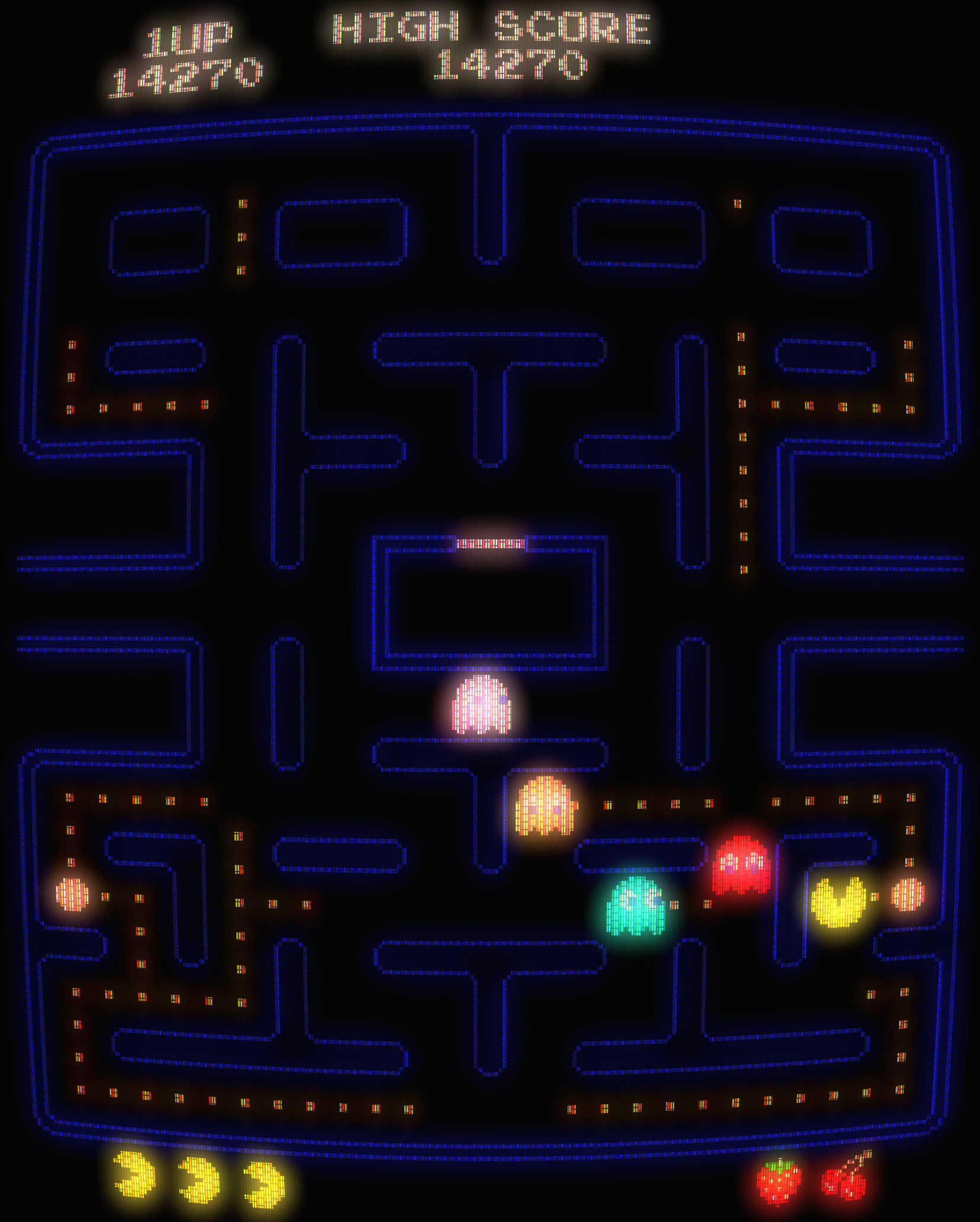

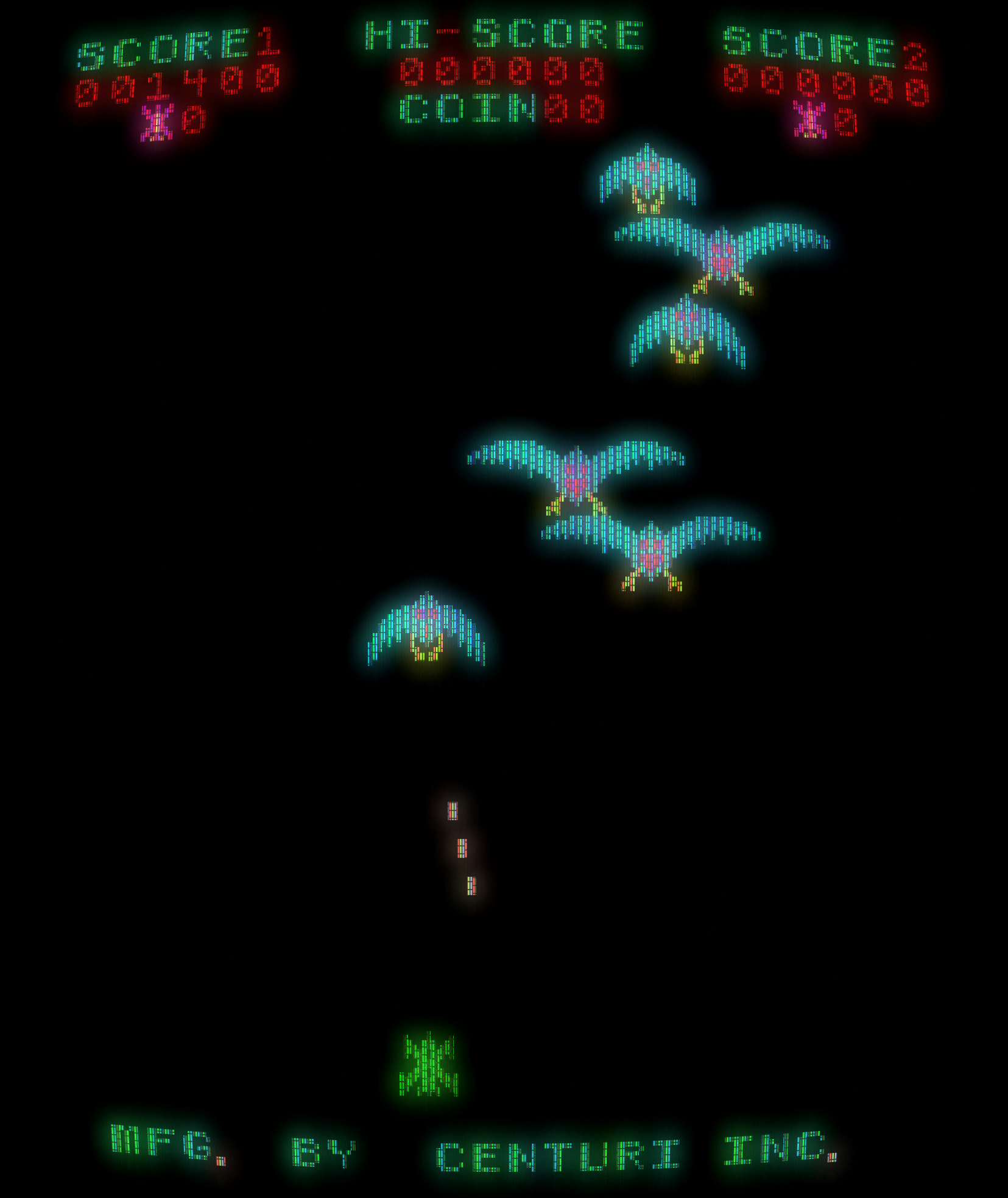
 The Game: In a heavily armed space fighter, your job is pretty simple – ward off wave after wave of bird-like advance fighters and Phoenix creatures until you get to the mothership, and then try to blow that to smithereens. All of which would be simple if not for the aliens’ unpredictable kamikaze dive-bombing patterns. The
The Game: In a heavily armed space fighter, your job is pretty simple – ward off wave after wave of bird-like advance fighters and Phoenix creatures until you get to the mothership, and then try to blow that to smithereens. All of which would be simple if not for the aliens’ unpredictable kamikaze dive-bombing patterns. The 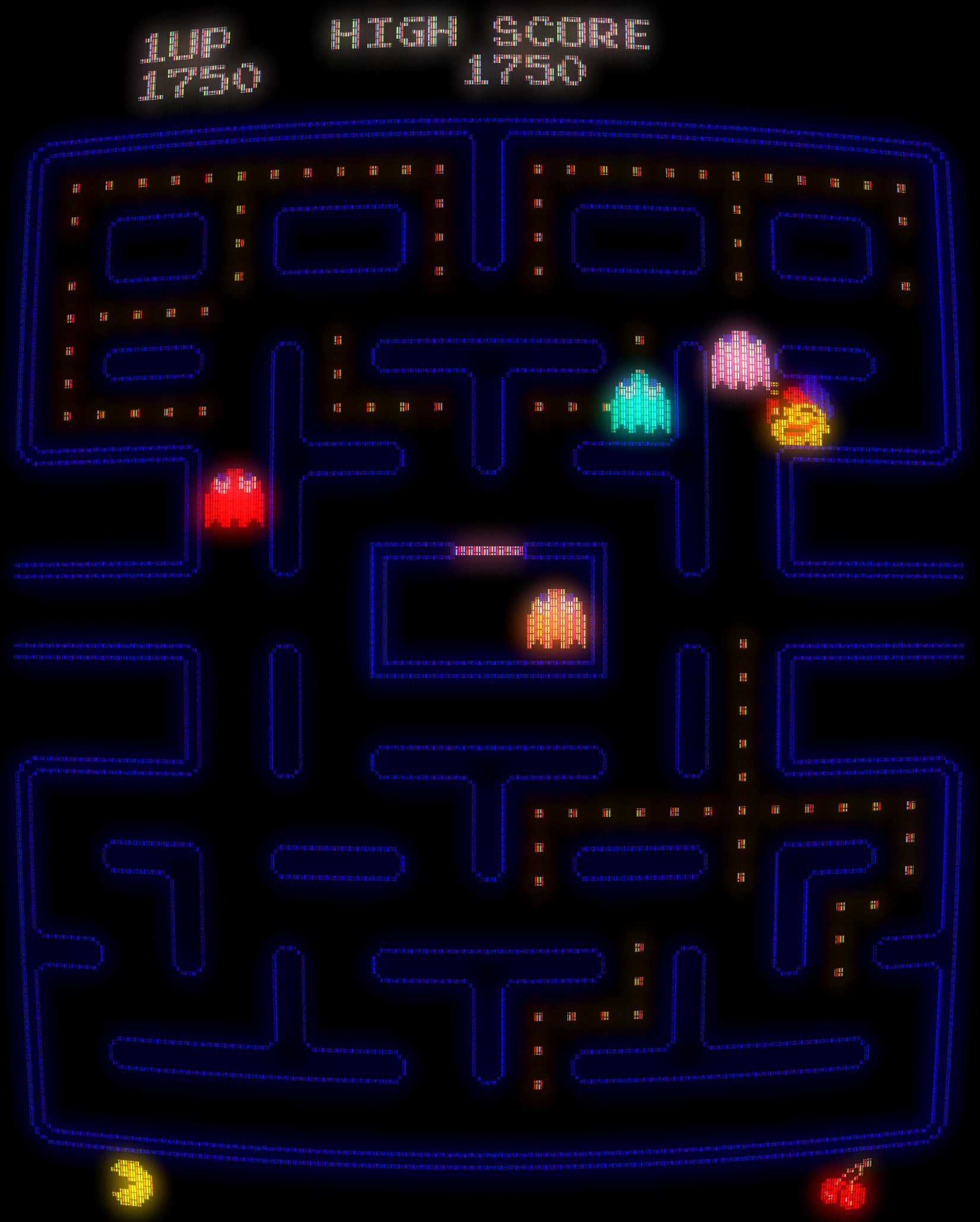
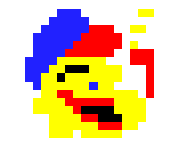 The Game: As a yellow sailor man consisting of a head and nothing else (jaundice was really bad in those days), you maneuver around a relatively simple maze, gobbling small dots and evading four colorful monsters who can eat you on contact. In four corners of the screen, large flashing dots enable you to turn the tables and eat the monsters for a brief period for an escalating score. The monsters, once eaten, return to their home base in ghost form and return to chase you anew. If cleared of dots, the maze refills and the game starts again, but just a little bit faster… (unknown bootleg manufacturer, 1980)
The Game: As a yellow sailor man consisting of a head and nothing else (jaundice was really bad in those days), you maneuver around a relatively simple maze, gobbling small dots and evading four colorful monsters who can eat you on contact. In four corners of the screen, large flashing dots enable you to turn the tables and eat the monsters for a brief period for an escalating score. The monsters, once eaten, return to their home base in ghost form and return to chase you anew. If cleared of dots, the maze refills and the game starts again, but just a little bit faster… (unknown bootleg manufacturer, 1980)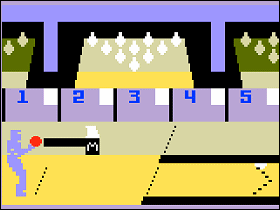
 The Game: You’ve gotta have balls if you’re going to play this game – lots of ’em. Multicolored ones too. The game is pool, and you use the joystick to rotate your stick around the cue ball, trying to angle for the perfect shot. Whatever you do, don’t sink the cue ball! (Magnavox, 1980)
The Game: You’ve gotta have balls if you’re going to play this game – lots of ’em. Multicolored ones too. The game is pool, and you use the joystick to rotate your stick around the cue ball, trying to angle for the perfect shot. Whatever you do, don’t sink the cue ball! (Magnavox, 1980)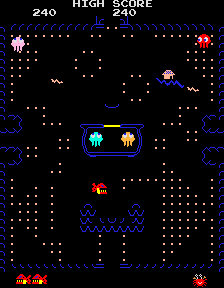 The Game: As a butt-ugly fish, you maneuver around a simple undersea maze, gobbling small dots (10 points) and evading four colorful squids who can eat you on contact. In four corners of the screen, large flashing dots (50 points) enable you to turn the tables and eat the monsters for a brief period for an escalating score (200, 400, 800 and 1600 points). Periodically, assorted items appear near the center of the maze, and you can consume these for additional points as well. The squids, once eaten, return to their home base in ghost form and return to chase you anew. If cleared of dots, the maze refills and the game starts again, but just a little bit faster… (“GL”, 1981)
The Game: As a butt-ugly fish, you maneuver around a simple undersea maze, gobbling small dots (10 points) and evading four colorful squids who can eat you on contact. In four corners of the screen, large flashing dots (50 points) enable you to turn the tables and eat the monsters for a brief period for an escalating score (200, 400, 800 and 1600 points). Periodically, assorted items appear near the center of the maze, and you can consume these for additional points as well. The squids, once eaten, return to their home base in ghost form and return to chase you anew. If cleared of dots, the maze refills and the game starts again, but just a little bit faster… (“GL”, 1981)